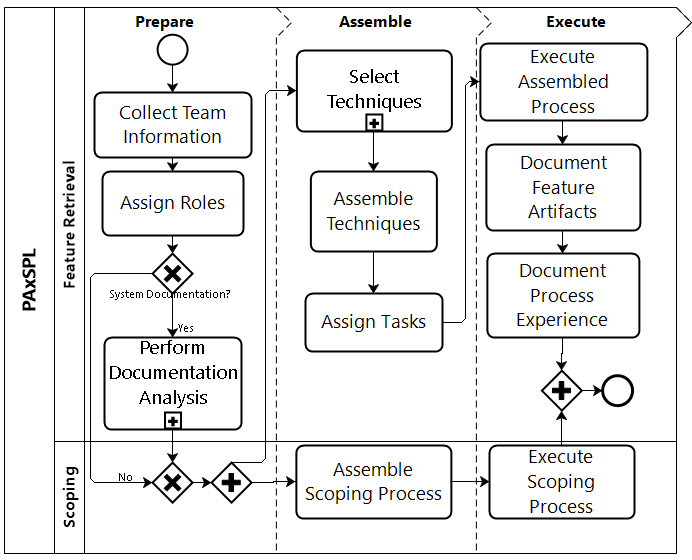Formal Concept Analysis
A mathematical method that provides a way to identify "meaningful groupings of objects that have common attributes".
The context does not have duplicate rows or columns
No context rows can be expressed as intersection of other rows. The lattice of such context is meet-reduced. No context columns can be expressed as intersection of other columns. The lattice of such context is join-reduced
Extraction > Categorize > Group
- Source Code
- Requirements List
- Design Models
- Any textual artifact
- Concept lattice.
- (Eisenbarth et al. 2001)
- (Yang et al. 2009)
- (Eyal-Salman et al. 2014)
- (Eyal-Salman et al. 2013b)
- (AL-Msie'deen et al. 2013)
- (AL-Msie'deen et al. 2012)
- (Xue et al. 2012)
- (Maazoun et al. 2014a)
- (Maazoun et al. 2014b)
- (Mefteh et al. 2014)
There are a lot of different tools and plugins for FCA that can be found in here
Formal Concept Analysis is recommended when program elements (such as classes, methods, etc.) have meaningful names ("attribute" instead of "atr" or "home" instead of "hm"). Besides that, is highly recommended to use this technique in products well documented.
A Information Retrieval Technique cannot achieve quality results when applied to products with no documentation and no meaningful identifiers names. For that reason we don't recommend the use of Formal Concept Analysis or any other Information Retrieval Technique in those situations.
🔄 Prepare, Assemble and Execute Process for SPL (PAxSPL)

-
-
Static Analysis Techniques
-
Information Retrieval Techniques
-
Support Techniques
-
PAxSPL is a project developed within the Laboratory of Empirical Studies in Software Engineering
